
The aftermath of the protests in Sanaa, the capital of Yemen, left many walls filled with dueling graffiti. One Yemeni artist has taken to the streets, bringing neighborhoods together, to take back the walls through art. See the video here.

The aftermath of the protests in Sanaa, the capital of Yemen, left many walls filled with dueling graffiti. One Yemeni artist has taken to the streets, bringing neighborhoods together, to take back the walls through art. See the video here.
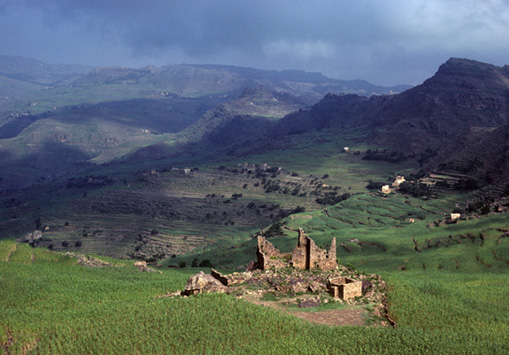
near al-Tawila, September, 1978; Photo by Daniel Martin Varisco
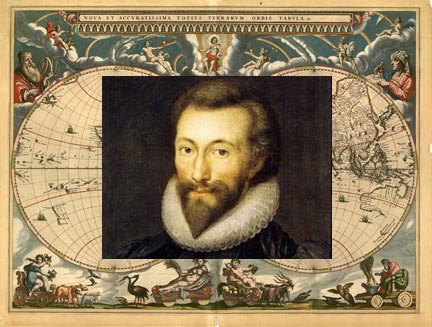
“John Donne and 1664 Dutch map of the world
“No man is an iland, intire of it selfe; every man is a peece of the Continent, a part of the maine; if a clod bee washed away by the Sea, Europe is the lesse, as well as if a Promontorie were, as well as if a Mannor of thy friends or of thine owne were; any mans death diminishes me, because I am involved in Mankinde; And therefore never send to know for whom the bell tolls; It tolls for thee….”
John Donne, Meditation 17, Devotions upon Emergent Occasions, 1624
What was true some four centuries ago for the English metaphysical poet John Donne is timeless, even if his writ shows its linguistic age. Today it can also be said that no country is an island unto itself, no matter where or how you spin the globe. This is certainly the case for the United Sates, with our military still on the ground in Iraq and Afghanistan, targeted drones over Pakistan and Yemen, the smoldering aftermath of the bombs that brought down Qaddafi in Libya, the stench of made-in-the-USA arms just about everywhere. If, as Donne eloquently reflects, the death of any man (or woman or child) diminishes us, then why are we so hell-bent on adding to this diminishing by arming thugs and sending our military to die in other countries?
First, it is important to realize how much the death toll drones on daily. Take today, for example. On Al-Jazeera we learn there are “many dead in Afghanistan suicide blasts,” 18 dead and 45 wounded by the numbers. As the nominal peace part still fails to protect the dictator-weary people of Syria, reports are that some 9,000 have been killed so far by the Assad regime, including refugees over the border in Turkey. There are also “Pakistanis dead in apparent sectarian attack,“adding six more to the thousands who have been killed in the ongoing violence that plagues Pakistan. The see-saw fighting in Yemen’s troubled south leaves “Dozens killed in attack on Yemen army base.” And a few days ago “Hamas hangs three Gaza prisoners“. Continue reading For Whom the Death Toll tolls

Forget Huntington’s politically incoherent “Clash of Civilizations” and move over Eurabia and Islamofascism, there is yet another neologism in the Islamophobisphere (Okay, this is one of my own…). This is “Chrislam,” and for Christ’s sake (both the sacred and the profane uses of this phrase), no less. Among other end-timers, the expectant folks over at Rapture Ready have uncovered a diabolical (quite literally for these folks) plot to merge Christianity and Islam. It could be suspected of being Satanic for the simple fact that the plot takes place at Ivy League (and thus white-sepulchered) Yale University. Here is the post from one Joseph Chambers:
RICK WARREN, CHRISLAM AND THE YALE UNIVERSITY COVENANT
I NOW HAVE THE OFFICIAL YALE UNIVERSITY COVENANT SIGNED BY RICK WARREN. This is proof positive that he is a signed partner in promoting the Covenant between Islam and our Jehovah God as one God now named “Chrislamâ€. I’m simply printing for you the entire covenant and also coping his and other name from this document. Below is the exact list directly from the web page itself. Please note the underlined names mentioned here, and on the radio program: Robert Schuller, Rick Warren, Brian D. McLaren an David Yonggi Cho. Check the list for other names you might be familiar with. There are hubdreds of ministers thet may inlude your Pastor or leaders in your denominations. Check the large list of names on this offocial list from Yale. http://www.yale.edu/faith/acw/acw.htm
In the spirit of the Prophet Daniel, Mr. Chambers is tackling the end times by the horns (big and little for those who read Daniel), although I suspect Daniel’s Aramaic is more grammatical than Chamber’s English. Or is it that spell checks are also an invention of the Devil, not that Microsoft isn’t a prime candidate for the Lucifer of the moment? Continue reading Chrislam: Reinventing an Apocalyptic Neologism

Hurlbutt’s Atlas, p. 137
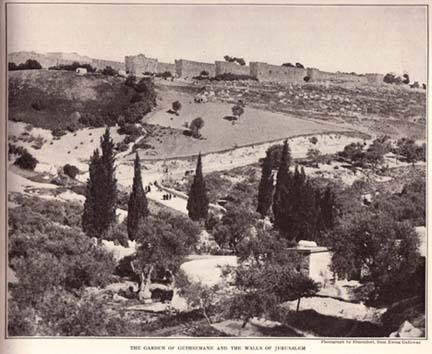
Hurlbutt’s Atlas, p. 133
The Christian fascination with the Holy Land as a window into interpretation of the Bible has a long and indeed fascinating history of its own. Here I continue the thread on Jesse Lyman Hurlbutt’s A Bible Atlas (New York: Rand McNally & Company, 1947, first published in 1882). As might be expected, a large part of the atlas is devoted to Jerusalem. Here are two century old pictures, one of the Dome of the Rock and the other a view of the Garden of Gethsemane looking toward an uncluttered landscape beneath the old city walls of Jerusalem.
[Tabsir Redux is a reposting of earlier posts on the blog, since memories are fickle and some things deserve a second viewing. This post was originally made on October 26, 2010.]
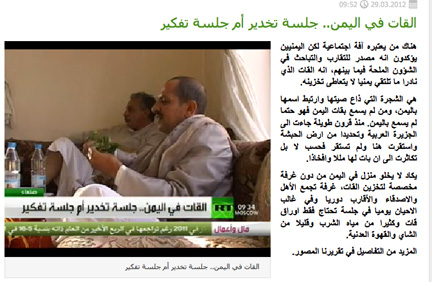
Here is a short, but informative, video in Arabic on the use of qât (Catha edulis) in Yemen, via the Arabic service of Russia Today.
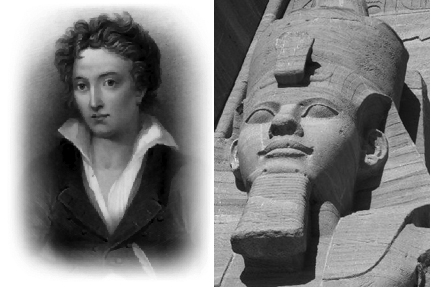
The fall of the dictators still echoes across North Africa and the Arabian Peninsula, with Syria’s Asad teetering at the brink. Mubarak, Qaddafi and Ali Abdullah Salih join the legion of past icons of unchecked power. Pharaohs and kings, caliphs and sultans, whether the divine myth of rule or the blatant Machiavellian Leviathan: oh how the mighty have fallen. No poem seems more poignant to capture the moment that Shelley’s timeless take on Ozymandias:
I met a traveller from an antique land
Who said: “Two vast and trunkless legs of stone
Stand in the desert. Near them on the sand,
Half sunk, a shattered visage lies, whose frown
And wrinkled lip and sneer of cold command
Tell that its sculptor well those passions read
Which yet survive, stamped on these lifeless things,
The hand that mocked them and the heart that fed.
And on the pedestal these words appear:
`My name is Ozymandias, King of Kings:
Look on my works, ye mighty, and despair!’
Nothing beside remains. Round the decay
Of that colossal wreck, boundless and bare,
The lone and level sands stretch far away”.
But the fantasized Ozymandias has a prologue, in Arabic graffiti and belles lettres. The entertaining text, today as ever before, known as The Book of Strangers and attributed to Abu al-Faraj al-Isfahani, reports the handwriting on the wall when the walls come tumbling down. An anecdote related by an old secretary tells of an inscription on the wall of a palace built by the Abbasid caliph al-Mutawakkil:
Money was spent and used up
and buildings were erected for fate to destroy.
When they arrived at the peak of their kingship,
a caravan leader cried out that it was time for the grave,
and he emptied the palaces, giving no respite to either the powerful or the oppressed.
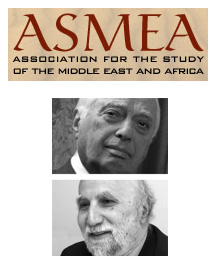
The primary international professional association of scholars who study the Middle East is MESA, the Middle East Studies Association. If you go to the main website, you will read:
The Middle East Studies Association (MESA) is a private, non-profit, non-political learned society that brings together scholars, educators and those interested in the study of the region from all over the world. From its inception in 1966 with 50 founding members, MESA has increased its membership to more than 3,000 and now serves as an umbrella organization for more than sixty institutional members and thirty-nine affiliated organizations. The association is a constituent society of the American Council of Learned Societies, the National Council of Area Studies Associations, and a member of the National Humanities Alliance.
Members of MESA receive two journals, the flagship International Journal of Middle East Studies and the revamped Review of Middle East Studies. Each year MESA holds an annual convention, this year in Denver. As noted, the association is non-political and contains members with widely divergent views on the controversial political and religious issues in the Middle East and North Africa.
So, why, you might wonder, is there a rival organization known as ASMEA, The Association for the Study of the Middle East and Africa, with its own journal housed with Taylor and Francis? Ah, politics. The founding fathers of the association are Bernard Lewis and Fouad Ajami, who appear to have joined forces primarily because of a common distaste for the work of Edward Said and their unfailing attraction to the intelligence community. The welcome message suggests that ASMEA is filling a gap:
ASMEA is a new academic society dedicated to promoting the highest standards of research and teaching in Middle Eastern and African studies, and related fields. It is a response to the mounting interest in these increasingly inter-related fields, and the absence of any single group addressing them in a comprehensive, multi-disciplinary fashion.
Like MESA, it claims to be non-partisan, although it is hard to explain why having only one point of view constitutes being non-partisan. It is obvious that scholars, like everyone else, will have differing opinions about issues like Palestinian statehood, inflammatory religious rhetoric, gender and a variety of issues that call for better understanding through dialogue among scholars. But ASMEA is monologue on top of being superficially trite. The claims for the “highest standards of research†are laughable, given the contents of its journal. For example,the most recent issue contains one book review. The chosen book is Rock the Casbah: Rage and Rebellion across the Islamic World by Robin Wright. The author of the book is a reporter, well-traveled (140 countries and counting) and with a prolific presence on all the media. With due respect to the importance of journalism in a free society, Ms. Wright is not an academic scholar; nor has her book been published through the peer review vetting of an academic press. I am not concerned with the value of her book, but it is the kind of book that routinely gets reviewed in major media outlets and rarely in academic journals. Is this the only book that ASMEA could find worth reviewing? [Update: In my original post I misidentified Stephen A. Emerson as Stephen Emerson, an unabashed partisan who sees jihadist terror behind every Islamic-looking bush.] Continue reading ASMEA: ASinine and MEAn